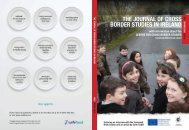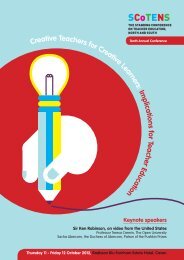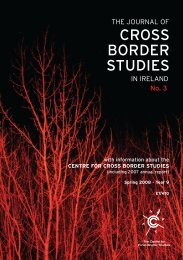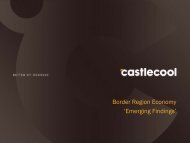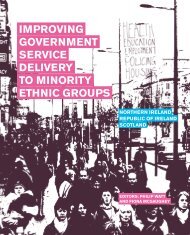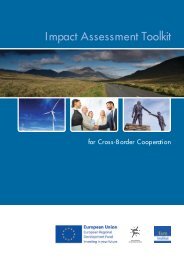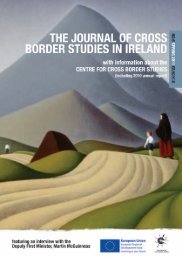4858 Mental Health Report - National University of Ireland, Galway
4858 Mental Health Report - National University of Ireland, Galway
4858 Mental Health Report - National University of Ireland, Galway
Create successful ePaper yourself
Turn your PDF publications into a flip-book with our unique Google optimized e-Paper software.
Findings from the Compatibility and<br />
Comparability <strong>of</strong> <strong>Mental</strong> <strong>Health</strong> and<br />
Related <strong>Health</strong> Data Sources<br />
Table 10 continued: EU Recommended Indicators <strong>of</strong> Generic<br />
Morbidity<br />
Optimism:<br />
LOT-R<br />
Social Support:<br />
Oslo-3 social<br />
support scale<br />
Social Isolation:<br />
Four items on<br />
isolation<br />
Life events:<br />
LTE<br />
Optimism has been characterised in general as a stable<br />
feature <strong>of</strong> personality and a prospective predictor <strong>of</strong><br />
adaptation to stressful encounters.<br />
Norms for college students: 14.33 (SD=4.28) (LOT-R)<br />
Bypass patients 15.16 (SD04.05) (LOT-R)<br />
Mean <strong>of</strong> LOT-R score in a sample <strong>of</strong> 25,000<br />
Finns:16.42 (SD=3.86)<br />
Cutpoint for optimism (>defined as ‘optimist’): 20<br />
Ref 15<br />
Social support is defined as availability <strong>of</strong> people whom<br />
the individual trusts and who make one feel cared for<br />
and valued as a person.<br />
Total score is calculated by summarising the scores for<br />
each item. The total score is used as categorical variable<br />
by using the following code:<br />
Poor social support 3-9<br />
Moderate social support 10-12<br />
Strong social support 13-14<br />
Ref 16<br />
Social isolation signifies lack <strong>of</strong> confidants and close<br />
relationships.<br />
Classification into ‘not isolated’ and ‘social isolated’ groups.<br />
Positive response to one or more questions leads to<br />
classification <strong>of</strong> being socially isolated<br />
Ref 2<br />
Life events can be defined as major occurrences in one’s<br />
life that require psychological adjustment to some degree.<br />
Cutpoint: 2 events within half a year<br />
Ref 17<br />
References:<br />
8. McDowell, I. & Newell, C. (1996) Quality <strong>of</strong> Life. Measuring health: A guide to rating scales<br />
and questionnaires, (2nd Ed), Oxford: Oxford <strong>University</strong> Press<br />
9. McCabe, CJ., Thomas, KJ., Brazier, JE. & Coleman, P. (1996) Measuring the mental health<br />
status <strong>of</strong> a population: a comparison <strong>of</strong> the GHQ-12 and the SF-36 (MHI-5). British Journal<br />
<strong>of</strong> Psychiatry. 169: 517-21.<br />
10. Shaw, J et al (2000) Comparison <strong>of</strong> the Depression Screening Characteristics <strong>of</strong> the CES-D,<br />
MHI-5, and MCS-12 in Primary Care, AHSR Annual Meeting: Behavioural <strong>Health</strong>.<br />
11. Bijl, RV. & Revelli, A. (2000) Current and residual functional disability associated with<br />
psychopathology: findings from the Netherlands <strong>Mental</strong> <strong>Health</strong> Survey and Incidence Study<br />
(NEMESIS). Psychological Medicine. 30: 657-668.<br />
12. Kessler, RC., & Frank, RG. (1997) The impact <strong>of</strong> psychiatric disorders on work loss days.<br />
Psychological Medicine. 27: 861-873<br />
13. Pearlin, LI., Lieberman, M. & Menaghan, E. (1981) The Stress Process. Journal<br />
<strong>of</strong> <strong>Health</strong> Soc Behaviour. 22: 337-56.<br />
14. Wilkins, K. & Beaudet, MP. (1998) Work stress and health. Statistics<br />
Canada: <strong>Health</strong> reports. 10: 47-62<br />
119





